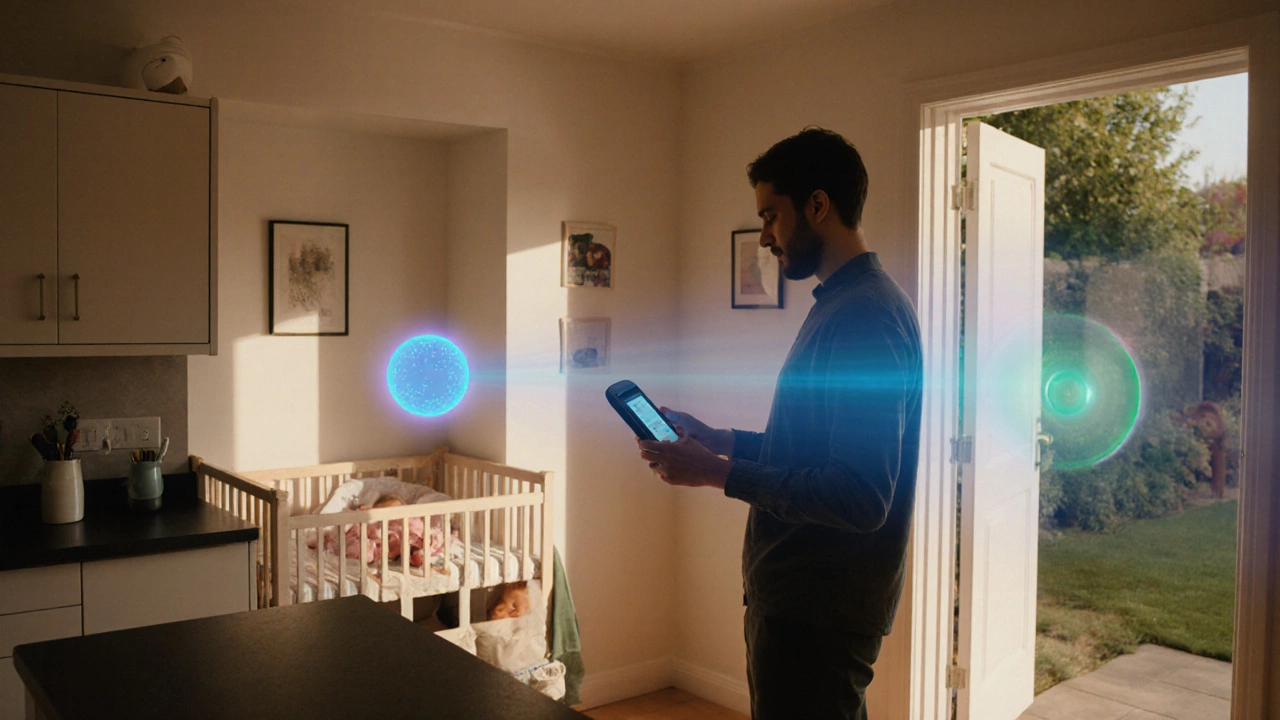When dealing with Baby Monitor, a small device that lets parents hear or see their infant from another room. Also known as infant monitor, it provides real‑time audio or video feedback to help ensure a baby’s safety. Baby monitor troubleshooting means pinpointing why that feed drops, why the sound whispers, or why the screen freezes. Most parents hit a snag within the first weeks, so knowing the common culprits saves time and nerves.
The first hidden player is the Motion Sensor, a component that detects movement and triggers alerts found in many home security kits. When a motion sensor sits close to a wireless baby monitor, its infrared beam can clash with the monitor’s own signal, causing occasional video dropouts or phantom noises. The fix is simple: reposition the sensor at least a foot away, or adjust its sensitivity in the companion app. This tiny tweak often restores crystal‑clear video without sacrificing home security.
Next up, the Wireless Security Camera, a camera that sends video over Wi‑Fi without cables in your living area can compete for bandwidth. If both the camera and the baby monitor stream high‑definition video to the same router, you’ll notice lag on the monitor’s feed. A practical step is to set the camera to a lower resolution during night‑time, or schedule its recordings outside your baby’s sleep window. This balances the load and keeps the monitor’s feed smooth.
Underlying all of this is the Wi‑Fi Network, the wireless router and signal that powers many modern monitors. Weak signal strength, outdated firmware, or channel interference from neighboring networks are prime suspects for connectivity hiccups. Start by placing the router on a higher shelf, away from thick walls and large metal objects. Then, run a quick speed test; you should see at least 5 Mbps down for clear audio and video. Updating the router’s firmware and switching to a less crowded channel (usually 1, 6, or 11) often eliminates random disconnects.
Don’t overlook the alarm system integration that many smart homes boast. If your alarm’s siren or panic button triggers a power surge, the monitor’s power adapter may reboot, cutting the feed. Using a surge protector for the monitor’s charger and ensuring the alarm’s power line is on a separate circuit reduces this risk. Some monitors even offer a “do not disturb” mode that silences alerts while the alarm is active, preserving battery life and preventing false alarms from waking the baby.
Finally, check the monitor’s battery backup. A failing battery can cause the unit to shut down under load, especially when the monitor is set to high‑resolution mode. Replace the battery with a fresh one, or switch to a wired power source if possible. This not only steadies the video stream but also guarantees that the monitor stays on during power outages, a crucial safety net for new parents.
With these insights, you’ll be able to spot the source of a glitch—whether it’s a competing motion sensor, a bandwidth‑hungry camera, a weak Wi‑Fi signal, or a power surge from your alarm system. Below you’ll find a collection of articles that dive deeper into each of these topics, offering step‑by‑step guides, product recommendations, and expert tips to keep your baby monitor running flawlessly.

Learn how far baby monitors really reach, how to extend their range, and what tech, placement, and troubleshooting steps ensure reliable coverage throughout your home.